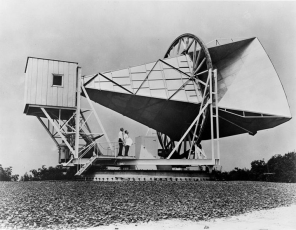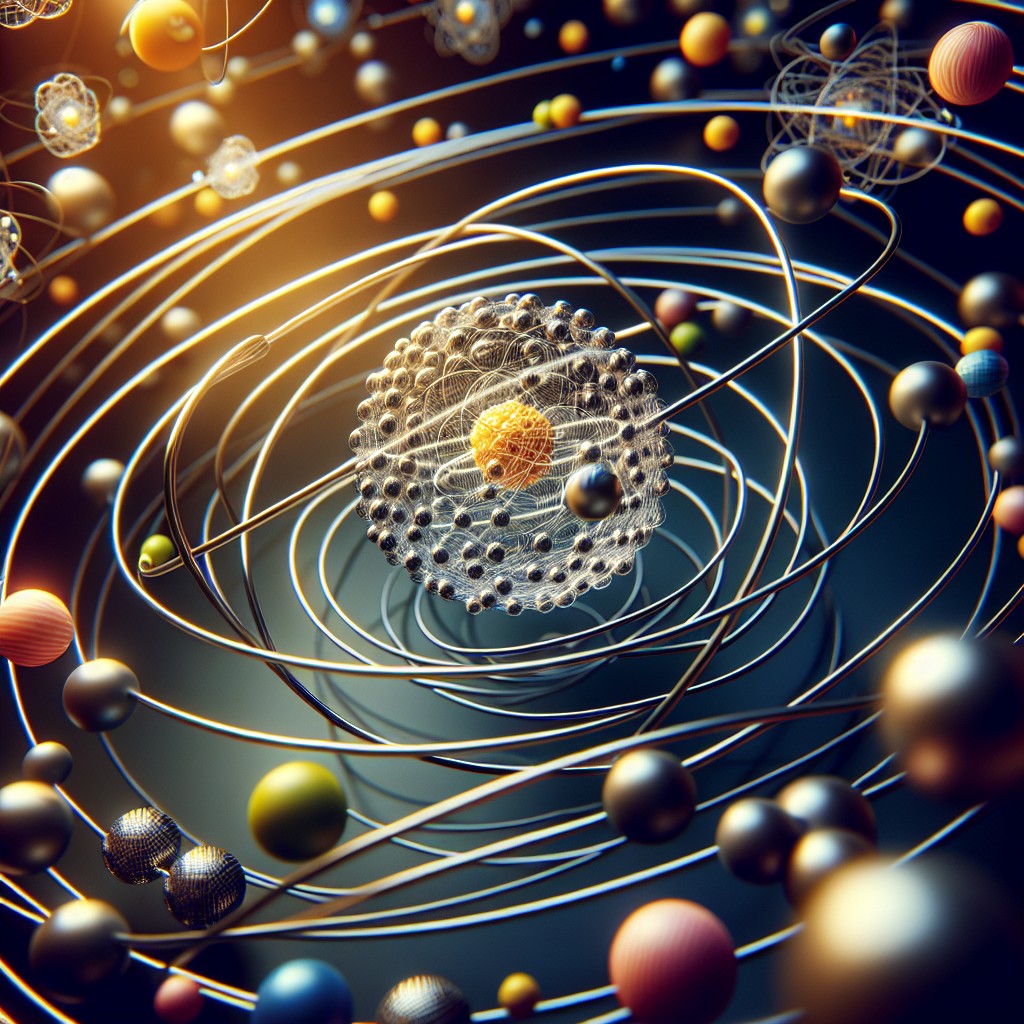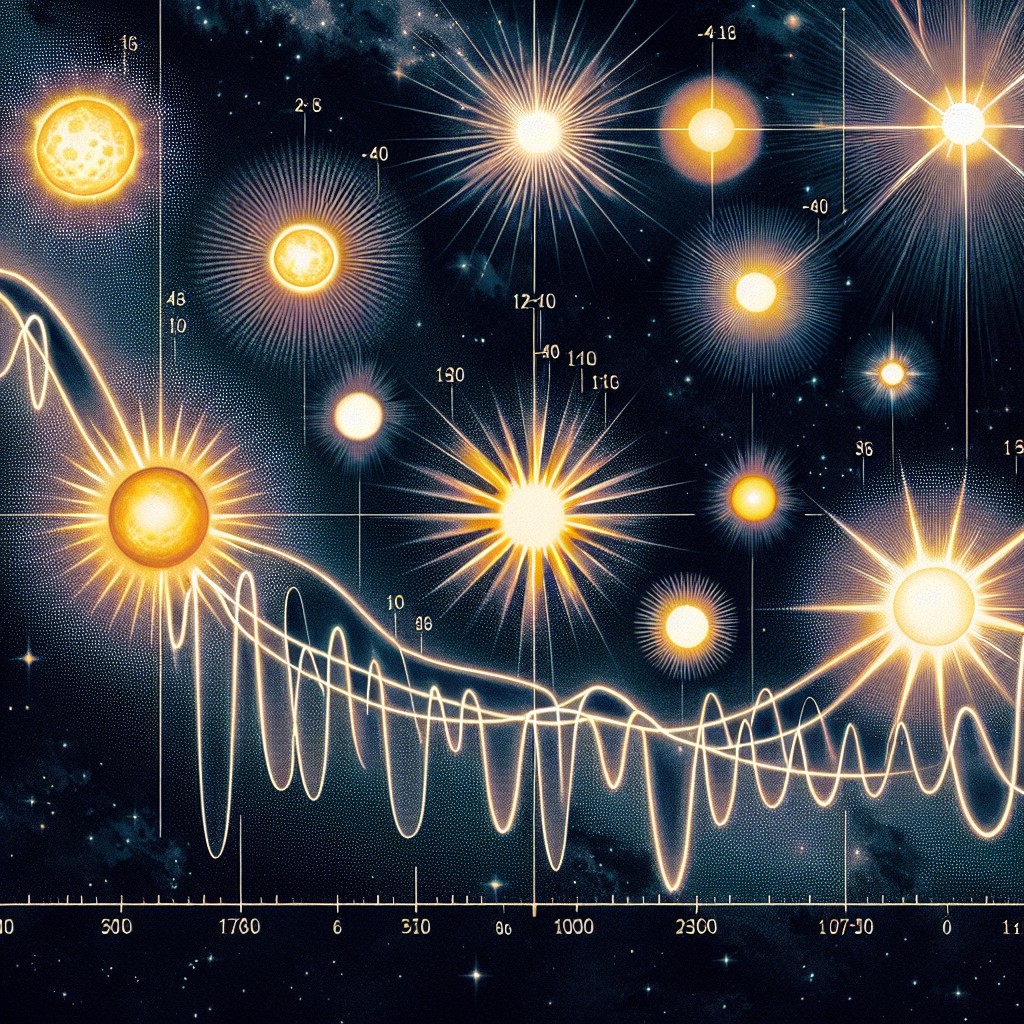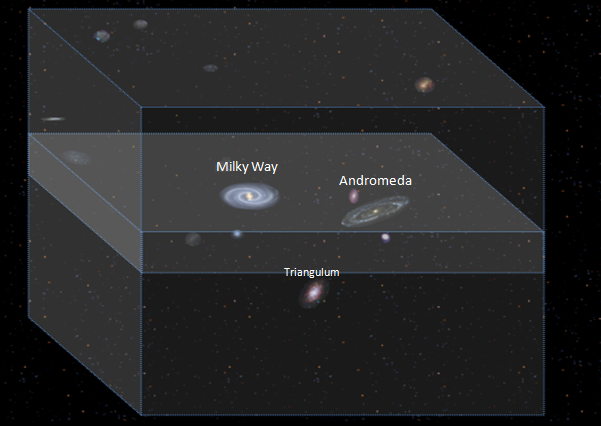The big bang theory accompanied by inflation theory, is to date, the most accurate explanation for the creation of the universe.
The Big Bang from a Singularity
Evidence of the Big Bang Theory
The Big Bang from a Quantum Fluctuation
Heisenberg’s Uncertainty Principal
What are Quantum Fluctuations?
Gravitational Energy is Negative
Naming the Big Bang Theory

The term ‘big bang theory’ was coined by Sir Fred Hoyle who helped develop Steady State Theory in the 1940’s. According to steady state theory the universe had no beginning and has always been expanding while the overall density of matter in the universe remained the same. After Edwin Hubble’s discovery of the expanding universe there were two main theoretical models of the universe. One was that the universe had a beginning (what we call the big bang) and the other was the steady state theory. The steady state theory was the most recognised for many years, due to miscalculations about the rate of expansion, and Hoyle termed the alternate theory ‘the big bang theory’ to mock it with images of cartoon explosions.
Prediction of the Big Bang
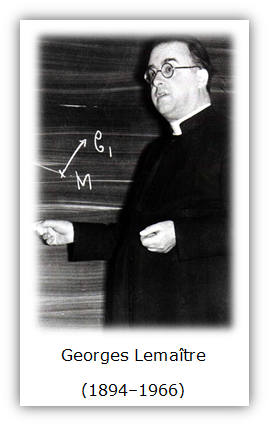
Initially the Big Bang theory was implied by impressive physicists, mathematician and priest named Georges Lemaitre. He theorised that space was expanding contrary to Albert Einstein’s theory of relativity.
This prompted Einstein to look at his work once more particularly the Maths he had used (where he had included the ‘universal constant’ in order to comply with the static universe theory).
In doing so, and by removing this universal constant, Einstein discovered that the universe could not be static and must be either expanding (as Lemaitre had suggested) or contracting.
Edwin Hubble’s observations of the red shift of distant galaxies in the 1920’s showed that the Universe was indeed expanding.
The Big Bang from a Singularity

A singularity is a point in space and time or spacetime where matter is infinitely dense.
Two young students at Gonville and Caius College at the University of Cambridge were discussing singularities within black holes. They also contemplated that if the universe was expanding then the reversal of time and space would logically lead to (or begin from) a singularity. These two young students were Stephen Hawking and Roger Penrose. At the very moment of this singularity would have been start of the event known as the Big Bang. It was believed that if the event of the big bang had happened, though, then there would be some evidence around even today. Without this evidence many scientists refused to believe in the theory of the expanding universe. One of its biggest opponents was Sir Fred Hoyle. Hoyle was a supervisor at Caius College Cambridge at the time Hawking and Penrose were young there
The idea of the universe starting form a singularity does create new questions such as what was before the singularity and what caused it? But there is a different version of the big bang story brought on by quantum theory.
Evidence of the Big Bang Theory
In the mid-1960s, Arno Penzias and Robert Wilson were working on a Radio Receiver pick up and boost radio signals for bell industries. This giant horn shaped receiver had a constant hiss which was originally attributed to the city nearby. They turned the horn towards space in order to illuminate the problem but it remained. They even put the possibility down to pigeons nesting in the receiver and had them all shot. After trying the receiver at different positions in the sky and still receiving this hiss they realised what this was. The hiss was caused by microwave radiation; the background radiation left over from the Big Bang in the form of microwave energy. The universe was/is still at 3 degrees Kelvin even after 13,700 million years. This was the required proof of the big bang event which also earned Penzias and Wilson the noble prize.
Above is the Holmdel Horn Antenna used by Penzias and Wilson to discover the background microwave radiation. It is made of Aluminium and steel and is 50ft long with a 15 meter receiver. Situated at Bell Telephone Laboratories in Holmdel, New Jersey it is a US National Historical Landmark.
Subsequently (on the 18th of November 1989) NASA sent up a Satellite called COBE (the Cosmic Background Explorer) in order to map the infrared and microwave radiation left over from our early universe.
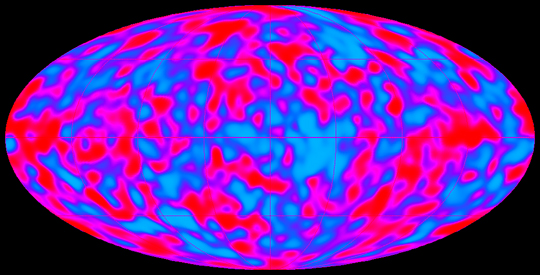
The image above shows the map the data produced by COBE, the slight variations in heat are represented in the colour (red being the warmest regions) .The variations are caused by clumps of matter which had developed in the early universe. These clumps of matter have become the galaxies, stars and planets formed today.
The Big Bang from a Quantum Fluctuation
The big bang starting from a quantum fluctuation not only solves the singularity problems but it also fits with all we know about quantum theory. The big bang created from a quantum fluctuation is the most accurate theory we have and is probably the most recognised and not to mention one of the most fascinating theories in modern science.
Before we discuss this theory we must first discuss some other phenomenon.
Heisenberg’s Uncertainty Principal
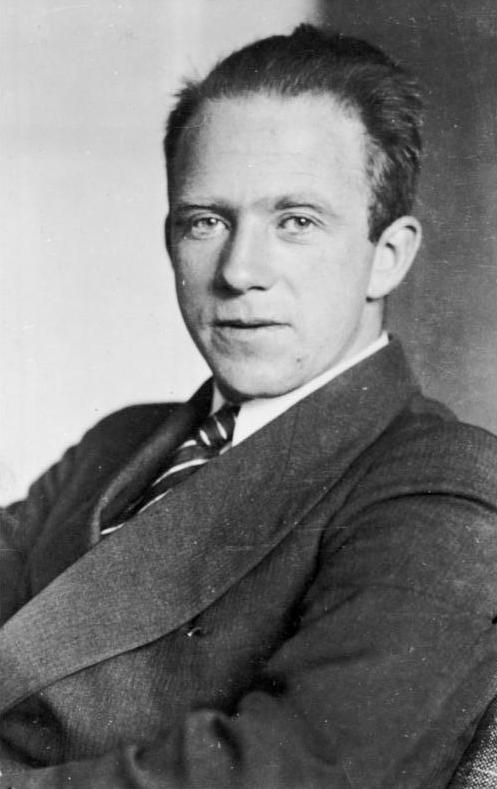
Photo taken of Werner Heisenberg (yes the one referred to in Breaking Bad) released under creative commons licence CC BY-SA 3.0 by Bundesarchiv
In Quantum theory there are certain aspects that we cannot measure. This is not due to poor equipment or methods but rather a rule of nature. For example it is not possible to know the precise position of a particle as well as its speed. The more we know about the motion of a particle the less we can know about its position and vice versa. Again this is a law of nature, first discovered by Werner Heisenberg in 1927, and is now known as the ‘Heisenberg Uncertainty Principal’. This law affects other measurements in pairs known as ‘conjunctive variables’ and includes, as we have discussed, position and momentum but include many others including energy and time.
What are Quantum Fluctuations?
What we may think of as empty space is not always empty. Particles appear from nothing and vanish again. Just as a photon can become both matter and antimatter – which annihilate each other becoming a photon once more – so too can these particles appear from nowhere. It is this phenomenon occurring at the event horizon of a black hole that causes Hawking Radiation and it is explained by the uncertainty principle. As stated above time and energy are conjunctive variables of the uncertainty principle and this means we can never be exact about the amount of energy in an object such as a photon or electron. This includes empty space which we may think of as having zero energy but that is too precise for the uncertainty principle. Therefore in any given point of space it may have some energy, and this energy can form particles if they are short lived (this is the time part of the conjunctive variable pair. The more energy a quantum fluctuation has the shorter its lifetime). These short lived particles are known as quantum fluctuations or vacuum fluctuations.
Gravitational Energy is Negative
The force of gravity is equal to the mass of the two objects divided by the square of the distance between them.
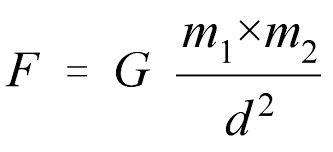
If two objects were infinitely distant apart then you would have to multiply the mass of one object (m1) by the mass of the second object (m2) and divide the answer by infinity squared. This would state that the gravitational force is zero no matter the mass of the objects. As objects move closer together the gravitational energy acting on the objects is converted into kinetic energy which causes them to move faster together. If the force of gravity is zero to start with and it decreases as the matter moves closer together then it must be a negative value.
According to general relatively if any collection of matter, say the entire universe, was collapsed in on itself to form a singularity its gravitational energy would be minus mc2 (where m is the mass of the entire universe and c is the speed of light). At the same time according to general relativity the entire energy of the universe is equal to mc2 and therefore the two cancel each other out. This would mean that the overall energy of the universe is zero.
Quantum Fluctuation Theory
In the 1960’s a young researcher by the name of Edward Tryon first proposed that the universe could have been formed as a quantum fluctuation but he took it no further at the time. Then in the 1970’s Tryon published a paper on the idea where he suggested that a quantum fluctuation could occur that was smaller than a proton but containing enough mass energy for the entire universe. Due to the gravitational energy cancelling out its mass energy of the fluctuation would have an overall energy of zero.
Because the greater the energy a quantum fluctuation has the shorter its lifetime, a quantum fluctuation with zero energy can live forever – and all observations do seem to point to an eternal universe. But this seed is under huge gravitational pressure to collapse into a singularity so what prevented this collapse.
Expansion Theory

Photo of Alan Guth at Trinity College, Cambridge, UK. December, 2007 released under Creative Commons Licence CC BY-SA 3.0 by Betsy Devine
In 1979, Researcher Alan Guth working at MIT, realised that if a scalar field was present at the time of the big bang then this may have caused mass expansion of the minute fireball to the size of a grapefruit in less than a second. Scalar fields have negative pressure and therefore they pull things apart as opposed to forcing them together as gravity does. The growth would be expediential, continually doubling in volume every 10-37 seconds. The model proposed by Guth do meet other cosmological models and phenomenon such the grand unified theory(see below). It also explains why the universe is so flat with density very close to critical as well as the slight irregularities of matter distribution that allowed for galaxies and stars to form. When the Scalar field decayed its energy converted to heat energy and would have later formed matter that became stars, planets etc.
Planck Time
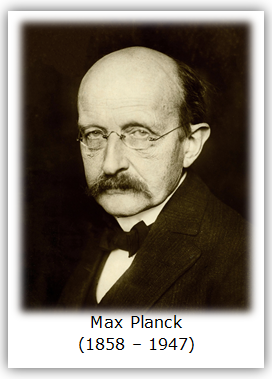 Quantum theory suggests that everything can be quantized, that is to say that everything is made up of minute, indivisible, packets. Quantisation of light, which we know as photons, was proven by Einstein’s paper on the photo-electric effect in 1905.
Quantum theory suggests that everything can be quantized, that is to say that everything is made up of minute, indivisible, packets. Quantisation of light, which we know as photons, was proven by Einstein’s paper on the photo-electric effect in 1905.
The Theory also suggests that time is also quantized into small packets which have been named Planck time (after quantum theorist Max Planck).
Each Planck time unit is equal to 10-43 seconds or a decimal point followed by 42 zeros and a 1 of a second. Just as the minute photons are un-noticeable to us, so too are these very small grains of time.
Grand Unified Theory
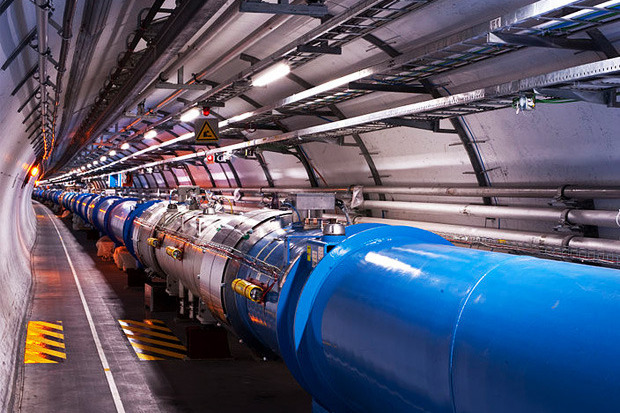
At the time of the big bang the laws of physics as we know them today did not apply. As tests have shown in particle accelerators, at high energies the fundamental forces combine. At high energies produced in accelerators the electromagnetic and weak nuclear force combine making a electro-weak force. At higher energies the electro weak force combine and become what is called a grand unified force and it is believed that at even higher energy, as would have existed at the first Plank time, gravity would have also been unified creating a super-force.
